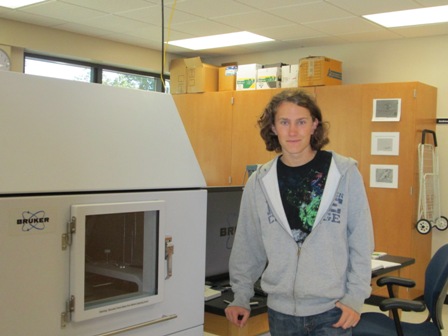 Development of a Novel Method to Measure Per- and Polyfluoralkyl Substances in Paper and Textiles
Development of a Novel Method to Measure Per- and Polyfluoralkyl Substances in Paper and Textiles
Research Advisor: Dr. Paul DeYoung and Dr. Graham Peaslee
Per- and polyfluoroalkyl substances (PFASs) are chemical compounds used as powerful, long-lived surfactants in many consumer products. Because of the environmental persistence of PFASs, their ability to bioaccumulate, and their suspected human toxicity, new methods to identify these chemicals in consumer products are needed. Current techniques to measure PFASs involve liquid chromatography-tandem mass spectrometry (LC-MS/MS) which requires significant time and expense per sample for analysis. Particle Induced gamma-ray emission (PIGE) spectroscopy is an established ion beam analysis method used to measure total fluorine concentrations in various objects, typically sediments and minerals. PIGE utilizes a beam of accelerated protons to excite 19F nuclei in a sample. As these nuclei return to their ground state, they emit characteristic gamma rays that can be used to identify and quantify the total fluorine content in a sample. In this study, paper and textile samples were analyzed with LC-MS/MS, paired with the total oxidizable precursor (TOP) assay, and with PIGE. A comparison of the results reveals that PIGE is an effective tool to determine the presence or absence of PFASs added to these consumer products. Limits of detection and the application of this method for rapid, non-destructive screening for certain consumer products were explored.
This work is made possible by funding from the National Science Foundation (NSF-RUI 1306074), the Department of Energy (DE-SC0007352), and the Hope College Department of Physics Guess Research Fund.





